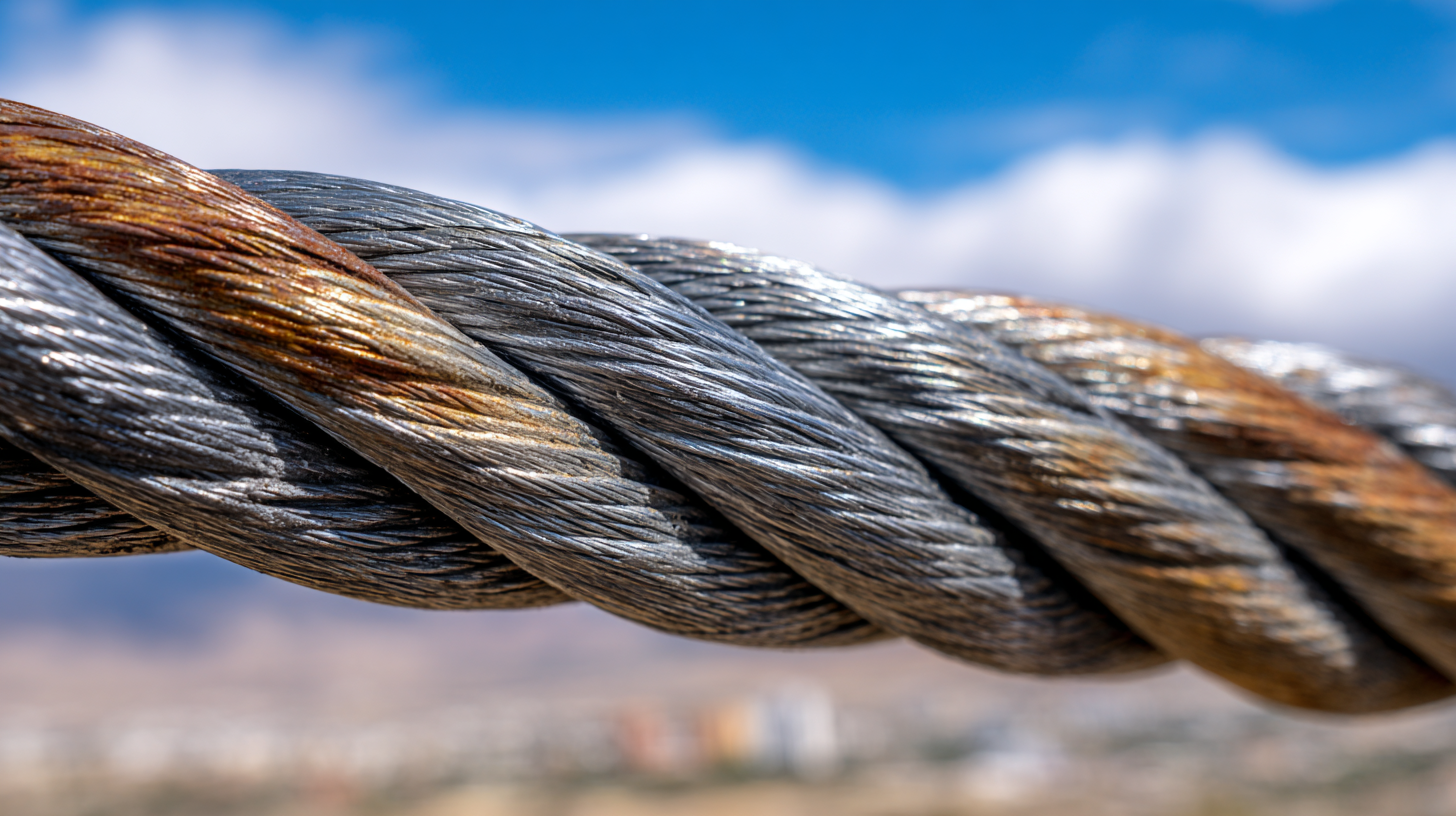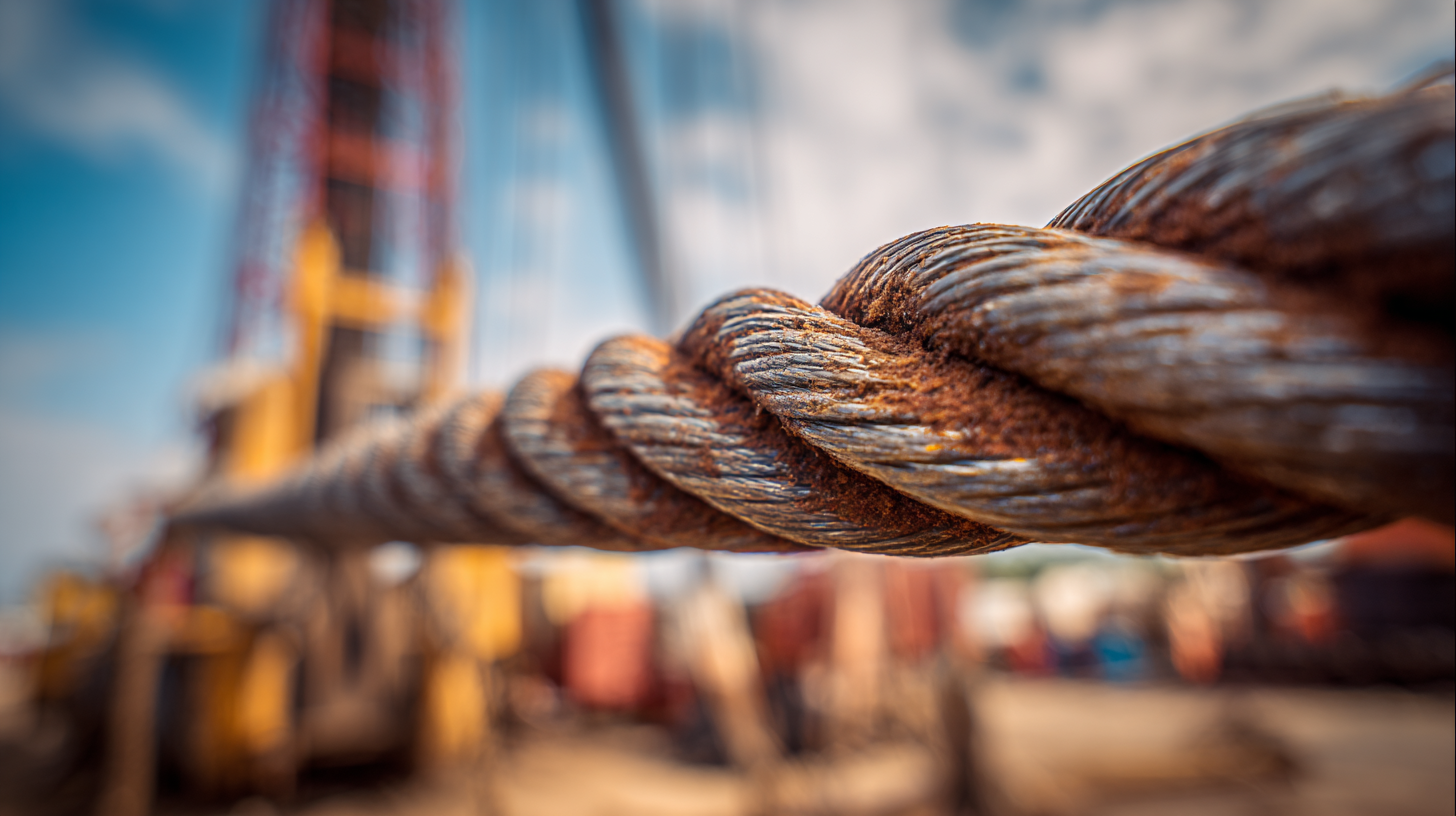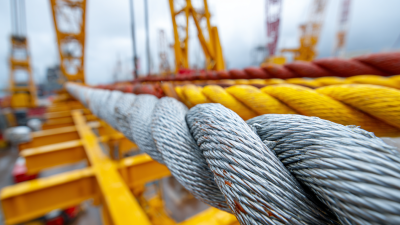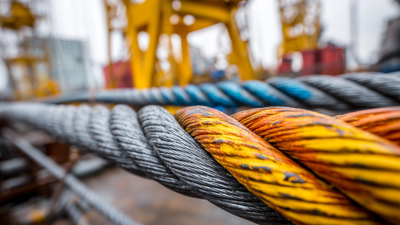How to Choose the Right Drilling Wire Rope for Your Project Needs
Choosing the right drilling wire rope is crucial for the success of any drilling project, as it directly impacts safety, efficiency, and overall performance. With various types of drilling wire ropes available, each designed for specific applications and conditions, it's essential to understand the key factors that influence your selection. Whether you're engaged in mining, construction, or oil exploration, the right drilling wire rope not only ensures reliable operation but also maximizes productivity and minimizes downtime. This article aims to provide insights into the critical elements to consider, such as tensile strength, flexibility, fatigue resistance, and environmental factors, enabling you to make an informed decision tailored to your project needs. By understanding these aspects, you can ensure that your drilling operations are equipped with the most suitable wire rope, enhancing both safety and efficiency for your drilling endeavors.

Understanding the Importance of Wire Rope Construction in Drilling Applications
In drilling applications, the construction of wire rope plays a pivotal role in determining both performance and safety. The design of the wire rope, including its diameter, material, and strand configuration, significantly impacts its strength and flexibility under various operational conditions. For example, ropes made of high-strength steel are ideal for heavy drilling tasks, as they offer enhanced durability and resistance to wear and fatigue. Understanding these factors can help in selecting the right wire rope that will withstand the rigors associated with drilling environments.
Moreover, the lay of the wire rope—which refers to how the individual wires are twisted together—can influence its behavior during use. A right-hand lay may be preferred for certain drilling operations to reduce the risk of torsion, while other projects may require a left-hand lay to better accommodate specific machinery. Additionally, the coating and corrosion resistance of the wire rope are crucial in extending its service life, particularly in harsh conditions such as deep-sea drilling or environments with chemical exposure. By prioritizing the correct wire rope construction, operators can enhance the reliability and efficiency of their drilling projects.
Key Specifications: Diameter, Lay, and Length for Efficient Drilling Performance
When selecting the right drilling wire rope for your project, understanding key specifications such as diameter, lay, and length is crucial for optimal performance. The diameter of the wire rope directly impacts its strength and efficiency. According to the IADC, larger diameters can provide increased load capacity and less abrasion, making them ideal for heavy-duty applications. For instance, a wire rope with a diameter of 16 mm can handle loads up to 10 tons, depending on its construction.
Lay refers to the direction in which the wires are twisted together. There are typically two types: left lay and right lay. Each type has its own benefits; left lay wire ropes are often preferred for better flexibility, while right lay ropes offer improved torque resistance. A report from the NIOSH highlights that using the appropriate lay can significantly reduce wear and extend the life of the wire rope used in drilling operations.
Tip: Always match the wire rope’s diameter and lay type with the specific requirements of your drilling equipment to ensure compatibility and efficiency. Additionally, consider the length of the rope, as longer lengths can allow for deeper drilling but may require careful management to avoid tangling or excessive friction during use. Selecting the right specifications will enhance your drilling performance and ensure safety on the job site.
Assessing Load Capacity: How to Match Wire Rope to Your Project's Requirements
When it comes to selecting the right drilling wire rope, understanding the load capacity is critical. According to the Wire Rope Manufacturers Association (WRMA), it is essential to choose a wire rope that can support at least five times the maximum load expected during operation. This safety factor accounts for potential overloading and dynamic forces that may occur in drilling applications. For instance, if a project will involve a maximum load of 10 tons, the wire rope must be rated for at least 50 tons to ensure safety and reliability.

In addition to load capacity, the choice of wire rope also depends on other factors such as the environmental conditions and the type of drilling being performed. A study by the American Institute of Steel Construction (AISC) indicates that wire ropes used in offshore drilling operations face unique challenges, including corrosion and fatigue due to constant exposure to saltwater. Thus, opting for corrosion-resistant materials and enhanced fatigue properties can significantly extend the lifespan and performance of the wire rope used in these demanding environments. Therefore, it is prudent to conduct a thorough analysis of both load requirements and environmental considerations when selecting wire rope for any drilling operation.
Material Selection: The Impact of Steel Types on Durability and Strength
When selecting a drilling wire rope, the type of steel used is a crucial factor that directly influences the
durability and strength of the product. Different grades of steel offer varying tensile strengths and resistance to wear and corrosion.
High-carbon steel, for instance, is renowned for its superior strength, making it ideal for
heavy-duty applications where high load capacity is essential. Conversely, stainless steel provides
excellent corrosion resistance, which is advantageous in environments exposed to harsh chemicals or moisture.

Additionally, the manufacturing process, including the rope's construction and treatment, affects its performance. Wire ropes constructed
with alloyed steel can provide enhanced properties, such as improved toughness
and fatigue resistance, which extend the lifespan of the wire rope in demanding drilling operations. It is also vital to consider factors
like wire diameter and lay direction, as these aspects can further influence the rope’s rigidity and flexibility. Ultimately,
understanding the impact of these steel types on durability and strength will lead to a more informed choice for your specific project needs.
Maintenance Tips: Maximizing the Lifespan of Drilling Wire Ropes in the Field
Maintaining drilling wire ropes in the field is crucial for maximizing their lifespan and ensuring operational efficiency. According to a report by the International Association of Drilling Contractors (IADC), improper maintenance can reduce wire rope life by as much as 50%. Therefore, implementing a regular inspection schedule is essential. Operators should focus on checking for signs of wear and corrosion, as early detection can prevent more significant issues and costly downtime. Additionally, lubricating the wire ropes regularly helps in minimizing friction and wear, which can extend their operational lifespan significantly.
Furthermore, environmental factors play a substantial role in the longevity of drilling wire ropes. The 2022 Wire Rope Technology Report states that exposure to harsh weather conditions and abrasive materials can accelerate wear. Utilizing protective covers and storing ropes in a controlled environment when not in use can effectively mitigate these risks. Additionally, following the manufacturer's guidelines for load limits and usage can prevent overstrain, a critical factor detailed in a study by the Society of Petroleum Engineers, which noted that overloading is a leading cause of wire rope failure in drilling operations. By prioritizing these maintenance practices, operators can maximize the performance and lifespan of their drilling wire ropes, ultimately leading to safer and more efficient project execution.
Drilling Wire Rope Selection and Maintenance Insights
This chart illustrates key parameters for selecting the right drilling wire rope, including wire rope diameter, load capacity, average lifespan, and maintenance frequency. Proper evaluation of these factors is essential for maximizing the effectiveness and longevity of drilling wire ropes in field operations.

Home
About Us
Products
Stainless Steel Anchor Chain
Manganese Steel Lifting Chain Grade 80
Manganese Steel Lifting Chain
Hastelloy Round Bars
Hastelloy Sheet
Hastelloy steel pipe
Stainless steel wire rope
Stainless steel round
Stainless steel hexagonal rod
Stainless steel strip
Plastic coating wire rope
Stainless steel plate
Stainless steel angle
Stainless steel pipe
Stainless steel wire
Stainless steel flange
Stainless steel channel
Stainless steel flat steel
Industries
News
Service
Blog
Contact Us








